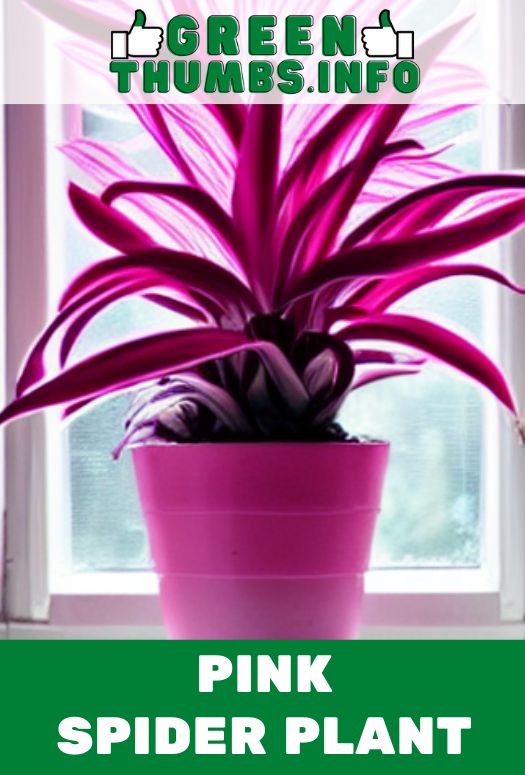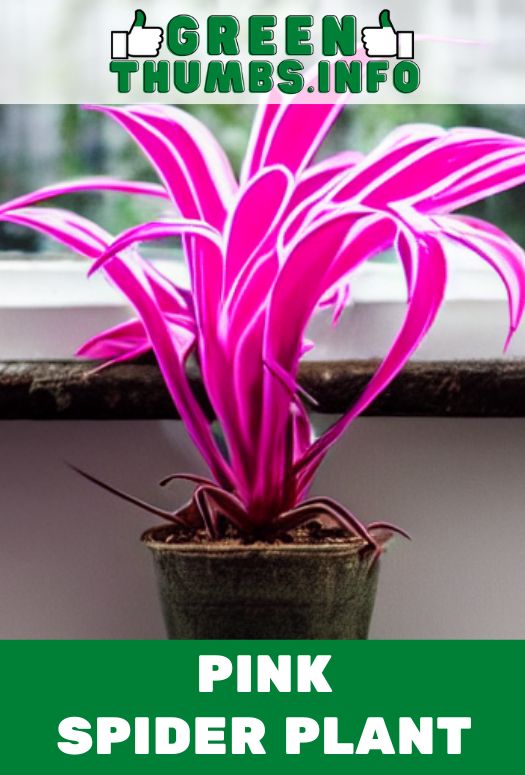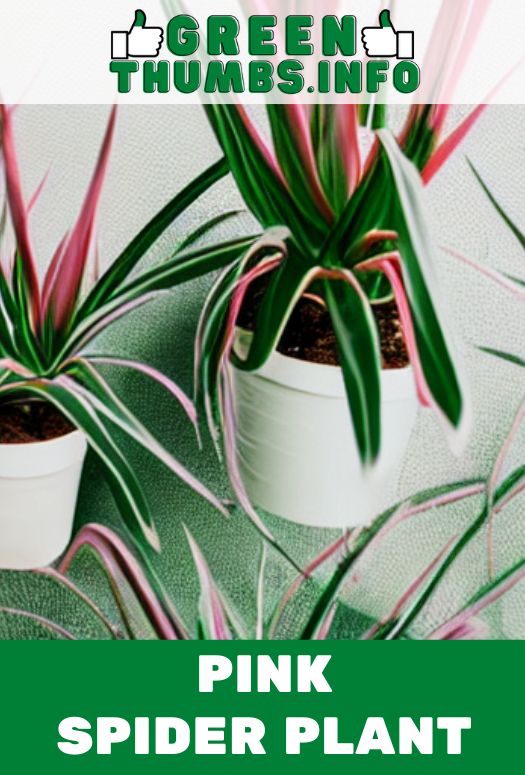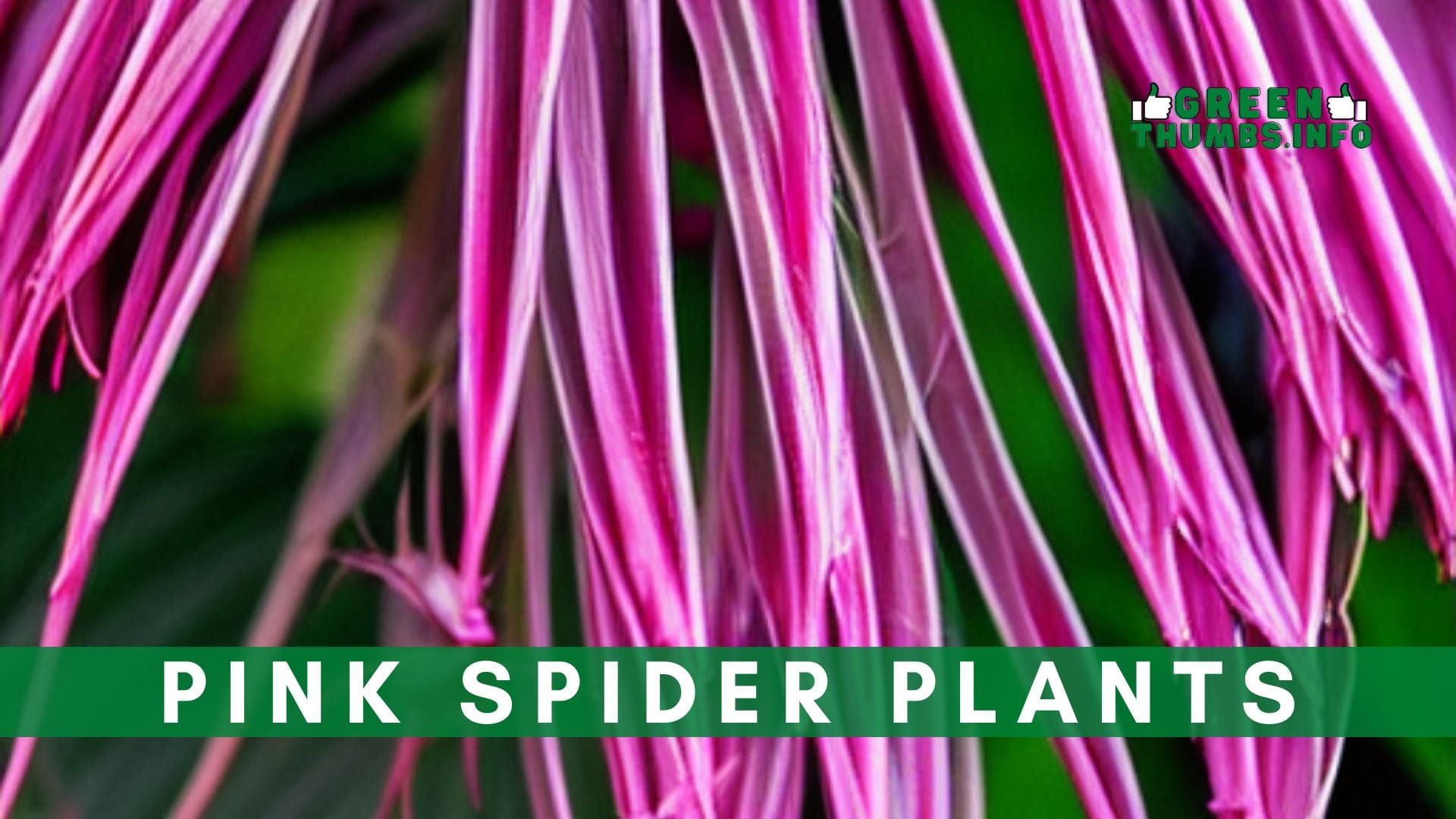Do you want to add a pop of pink color to your home? Pink spider plants are an excellent choice for any home. With their unique, bright pink foliage and easy-to-care-for nature, these plants make a great addition to any living space.
In this blog post, we will explore everything there is to know about pink-colored spider plants, from their appearance and growth cycle to tips for planting and caring for them.
Let’s jump in and learn all about these beautiful plants!

Pink Spider Plants
Pink spider plants (Chlorophytum comosum ‘Vittatum’) are evergreen perennials native to tropical and subtropical regions in Africa, Asia, and Australia. They are popular houseplants due to their easy-care nature and attractive foliage.
Appearance of Pink Spider Plants
The leaves of a pink spider plant look just like their green relative, albeit with a beautiful pink tint. You can find their unique pink leaves in an array of shades, ranging from pale pink to a deep magenta hue.
The foliage also features attractive white stripes running down the center which give these plants their name – “spider”.
Growth Cycle of Pink Spider Plants
These plants are relatively slow-growing and can reach a height of up to 2 feet. They prefer indirect light and temperatures between 60-75°F, although they can tolerate lower temperatures.
They are an especially good choice for those with busy lives since they don’t need to be watered often.

Care and Maintenance of Pink Spider Plants
The pink spider plant (Chlorophytum comosum ‘Pink’) is a stunning and classic variety of houseplants. They are easy to care for, and with regular maintenance, can remain vibrant and healthy for years.
Below are some basics to help you take care of your pink spider plant.
Watering Your Plant
Pink spider plants should be watered regularly, but not too much. It’s best to let the top few inches of soil dry out before watering it again.
When you do water your plant, make sure you use room temperature water and that you avoid soaking the foliage, as this can lead to rot or other issues.
Additionally, if you have hard water in your area, it’s best to use distilled water to keep minerals from building up in the soil over time.
Light and Temperature
Pink spider plants prefer bright indirect light—too much direct sunlight can damage their leaves—and temperatures between 65-75°F (18-24°C).
If possible, try to keep them away from drafts or any other cold spots in your home or office.
Feeding Your Plant
During the summer months when your pink spider plant is actively growing, it will benefit from being fed a diluted liquid fertilizer once every two weeks or so.
During the winter months when growth slows down, you can simply reduce feeding frequency until spring arrives again.

Repotting Your Plant
As your pink spider plant grows larger over time, it may need to be repotted into a larger pot with new soil every few years.
This allows it access to more nutrients and ensures that its soil remains fresh and aerated for optimal growth.
When repotting your pink spider plant, make sure you use a lightweight potting mix that drains well so that its roots don’t become waterlogged and rot away.
Pruning Your Plant
If necessary, prune brown or yellow leaves off of your pink spider plant as they appear—this allows the healthy parts of the plant to continue growing without having to expend energy on dead branches or leaves.
Additionally, if you want new baby plants (called “pups”), cut off any pups that are at least 4 inches tall with sharp shears sterilized with rubbing alcohol before planting them in a separate container filled with new potting soil mixture.
Final Thoughts
Taking care of a pink spider plant is a relatively simple and rewarding task that anyone can do. They have beautiful foliage, require minimal maintenance, and are generally easy to care for.
Just keep in mind the basics of watering, light, temperature, feeding, repotting, and pruning as you tend to your plant and it will reward you with years of beauty!
Now that you know how to care for pink spider plants, go ahead and give it a try – you won’t regret it!
With the right environment and proper maintenance, your plant will thrive and bring life into any area of your home or office. Good luck!



